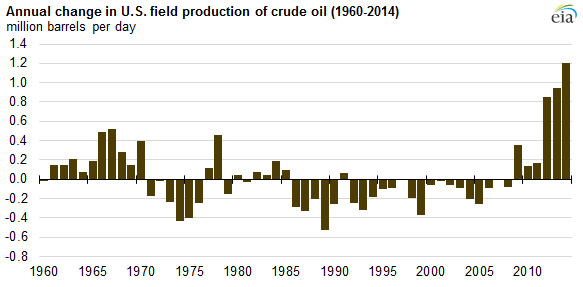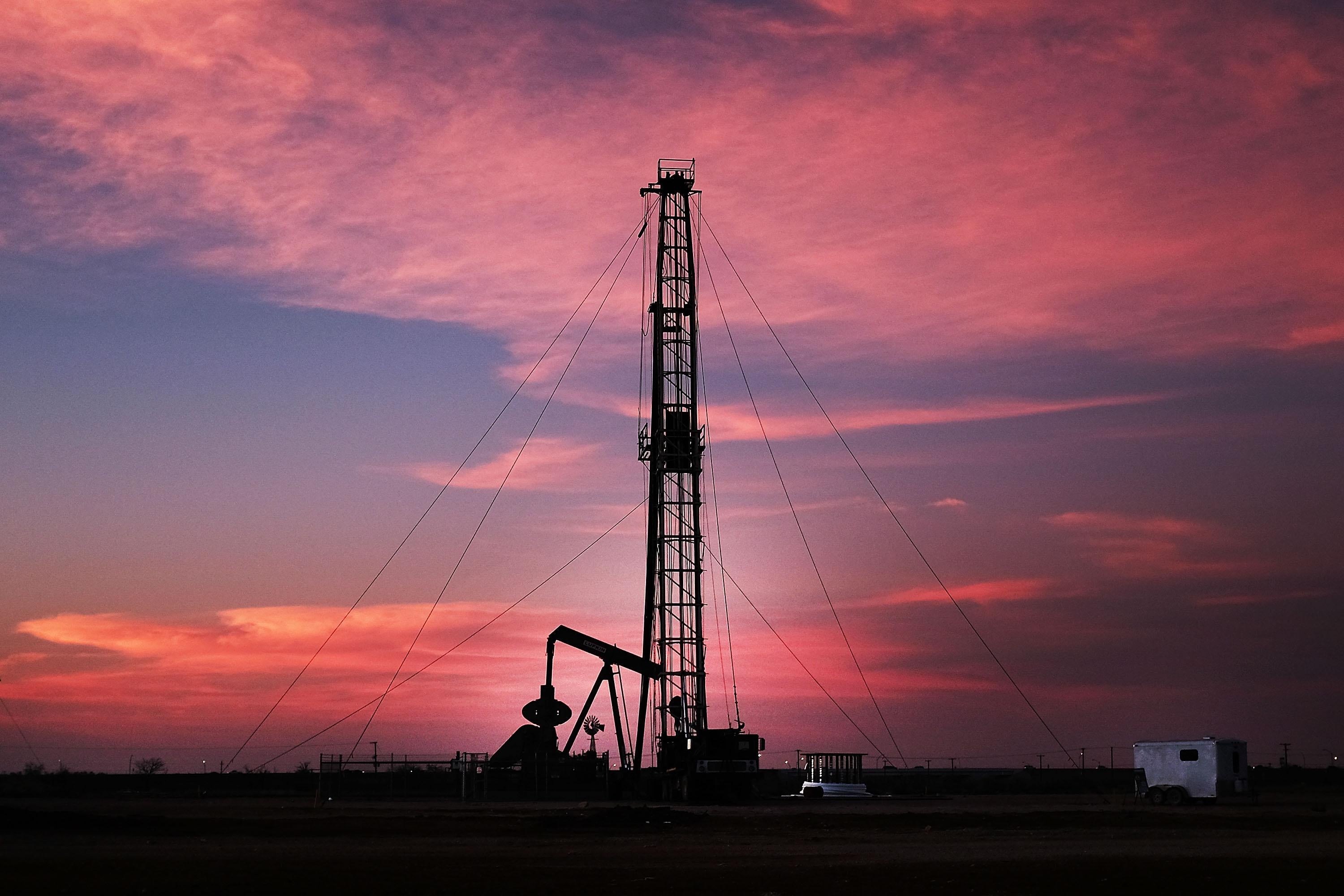Just how explosive has the American oil boom been? The U.S. Energy Information Agency offers some context today. Last year, production jumped by 1.2 million barrels per day, the most “since recordkeeping began in 1900.” Though this graph only dates back to 1960, you can see how the recent surge simply dwarfs other increases during the modern era.

U.S. Energy Information Administration
In the end, U.S. crude production grew by about 16 percent during 2014, which the EIA notes was the most in “more than six decades.” (Relatively large increases were more common in the early days of drilling.)

U.S. Energy Information Administration
As Tom Randall notes at Bloomberg Business, these charts show how U.S. producers essentially crashed the price of oil by dumping a massive amount of product on the market. But I think they also tell us something slightly more subtle about how unconventional oil exploration has fundamentally changed the oil world. American drillers have been able to mobilize at practically unprecedented speed, in part because hydraulic fracking doesn’t require enormous lead time. Because of that, OPEC may simply not be able to manage the price of oil as it’s done in the past. It can cut its production to bring up prices, but that will quickly bring on another stampede of small drillers to Texas and North Dakota—and fast. The fact that Saudi Arabia has chosen to maintain its production, cratering prices with hope of dissuading future oil exploration, was probably in part a recognition of that reality. At the same time, the pace at which frackers can start pumping from their fields is one reason why it may be very hard to do lasting damage to U.S. oil infrastructure. The bust of the last few months might discourage some long-term investment contingent on years and years of high prices. But in the states, pumping oil doesn’t necessarily require much long-term planning.
